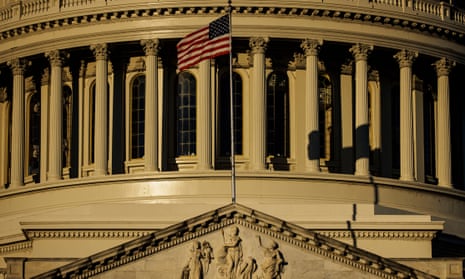The ‘red wave’ expected by Republicans and feared by Democrats failed to materialize

The mere fact that there are so many unknowns on the morning after election day is a sign that the night didn’t go as many had expected. The Republicans have not yet taken control of the US Senate or the House of Representatives and if they do, it won’t be by any huge margin. The final result won’t be the Republican landslide that Democrats feared or the big surprise that Democrats had hoped for.
But there won’t be much time for commiseration or celebration. Both parties will have to quickly regroup ahead of the 2024 presidential election and take stock of the lessons learned from these midterms. Here are some of the takeaways that are already becoming clear on Wednesday:
Choose your friends carefully. Candidates who banked on the power of association with President Trump didn’t do well. JD Vance, the Trump-backed nominee in Ohio, won his election but he was one of the very few who did. In Michigan, Trump’s choice of Tudor Dixon lost out, while in Pennsylvania, Republican candidates who were supported by Trump lost both the House and Senate. And in Florida, Governor Ron DeSantis won by a large margin while maintaining distance from Trump who recently nicknamed him “Ron DeSanctimonious”.
When faced with candidates they didn’t like, rather than holding their noses, voters were willing to split their ticket. This happened in Georgia where third-party Senate candidate Chase Oliver was able to pick up 2% of the vote, making a December 6 runoff likely between the Democratic senator Raphael Warnock and Republican challenger Herschel Walker as they need 50% of the vote to be a clear winner.
Don’t take away people’s rights. Wisconsin shows the way that national politics can play out regionally. In places like New York, where voters are much less likely to fear losing access to abortion, the issue remains ideologically powerful but less persuasive on a practical level. But in Wisconsin, a 173-year-old ban came into effect in June and since then, abortion access has been severely limited in the state.
There, the Democrats secured a narrow victory thanks to a campaign that emphasized the importance of abortions rights in the state. In the weeks before the election, voter registration among women surged and surveys suggested that young people were going to turn up in record numbers.
The parties look different compared with four years ago. There were some landmark wins for underrepresented groups. In Maryland, Wes Moore became the state’s first Black governor. Maxwell Frost, a 25-year-old part-time Uber driver and a Democrat representative in Florida became the first member of generation Z to head to Congress. James Roesener was elected to New Hampshire’s legislature, becoming the first openly transgender man to win in any state legislature election and Maura Healey of Massachusetts became the country’s first openly lesbian governor.
It’s not just Democrats. The Republicans had plenty of minority candidates for both the House and Senate as part of the party’s long-term strategy to secure a more sustainable voting base. And it appears to be working. Earlier this week, a survey from the Wall Street Journal found that Black and Hispanic voters were turning towards Republican candidates in higher numbers.
Voters are consumers too. For months, polls have consistently shown that the economy was a top concern for voters, many of whom have been affected by high prices when it comes to rent, mortgages, gas and food (in short, just about everything). Exit polls suggest that the economy continued to dominate on voting day with nearly a third of voters saying that inflation shaped their vote for the House more than any other issue.
With economic forecasts looking bleak for the months, and even possibly years ahead, Democrats are going to need to work hard to refine their economic messaging ahead of the 2024 presidential election. But for this moment, many will simply be breathing a sigh of relief about the red wave that failed to materialize.

Leave A Comment